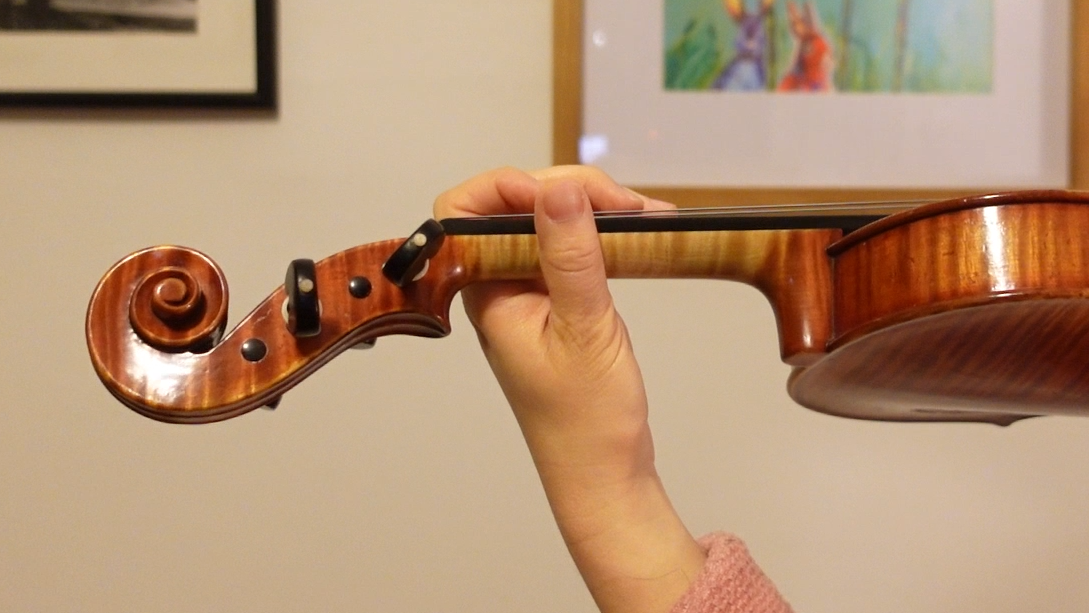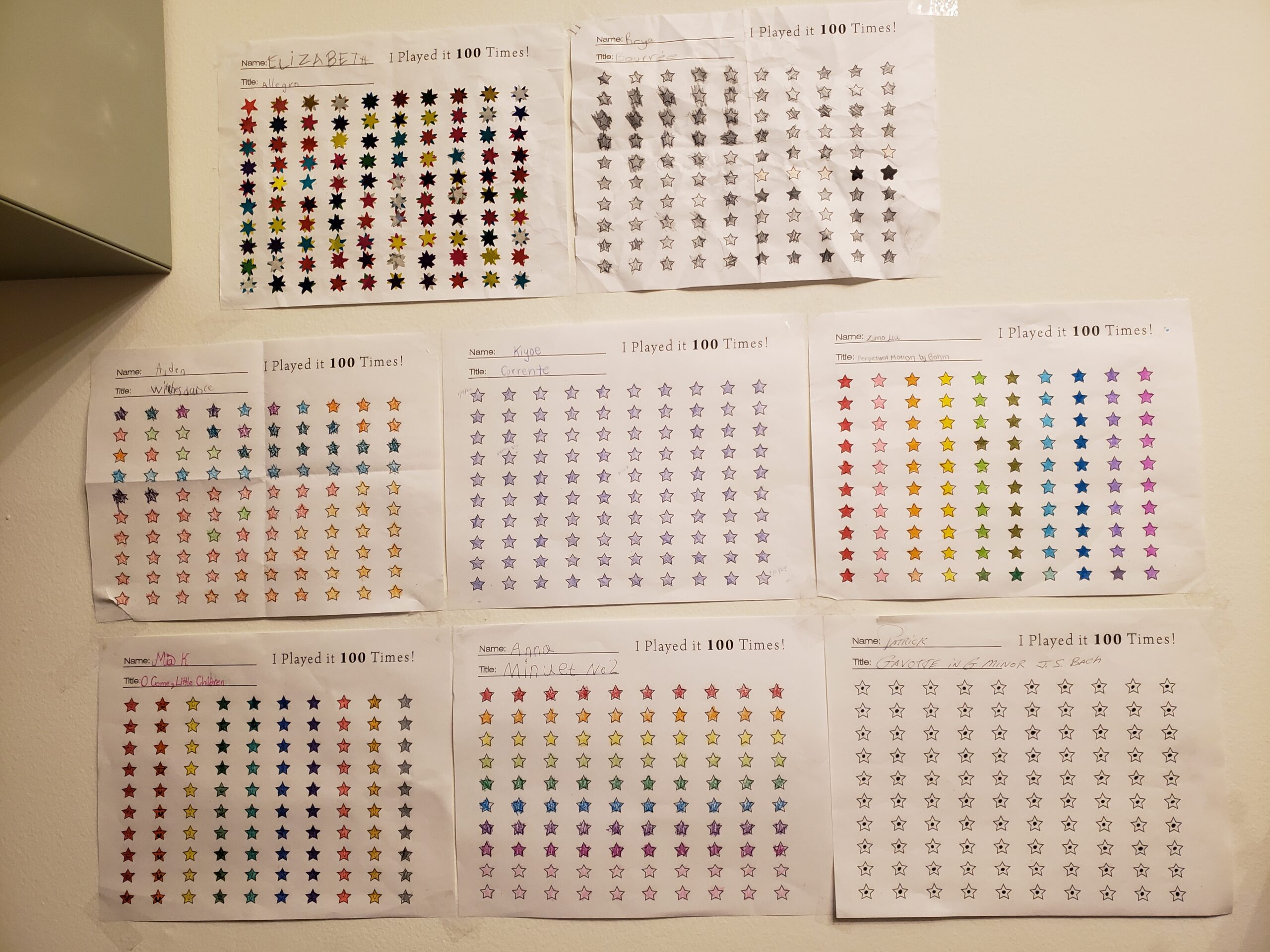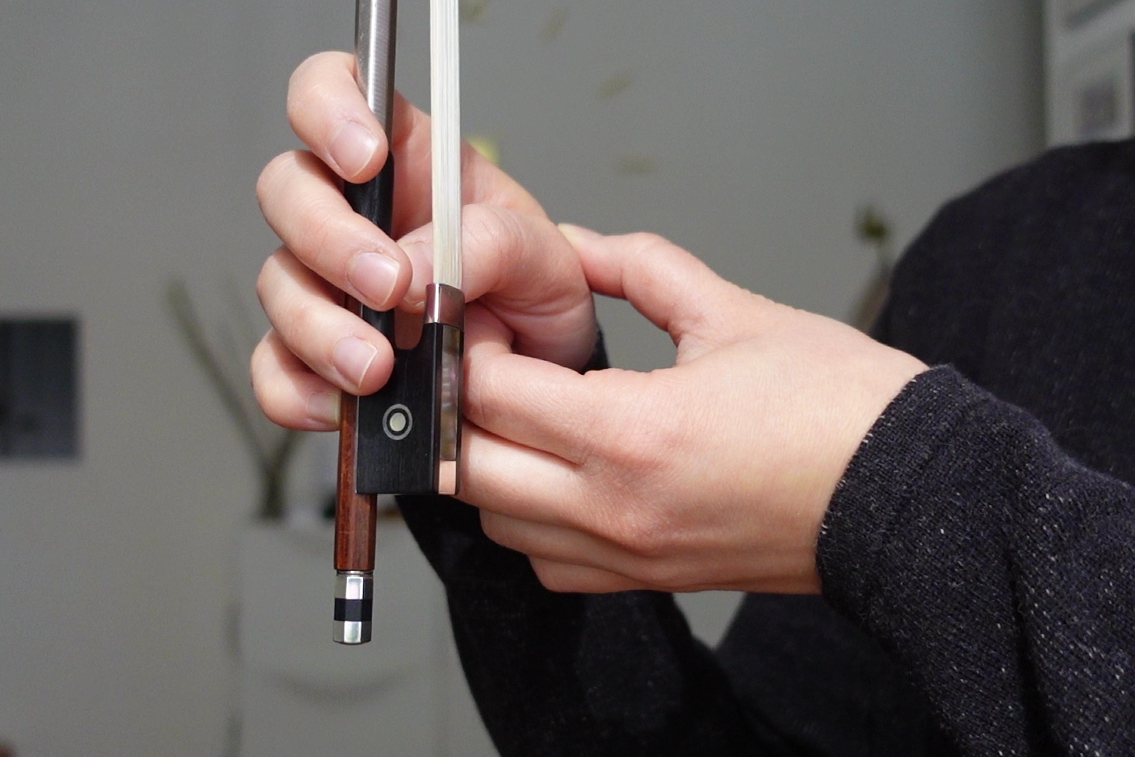Neck pain is a common issue for those who play the violin. This is often exacerbated by a lack of understanding about functional anatomy and kinesiology. Unfortunately, many of us were taught from our earliest violin lessons to play with tension and misalignment of the spine. Many violinists mistakenly believe they should extend their neck unnaturally forward so that their jaw fills the entire chinrest. Additionally, some of us may developed the habits of leaning the head to the left or squeezing the violin tightly. In other cases, violinists may be using shoulder rests that are too high or low for their body shape. Holding the violin in these ways cause us to manipulate the alignment of the spine, leading to chronic pain.
Anatomy of a Violinist’s Neck
There are seven bones in the neck, called the cervical vertebrae. When stacked in a healthy neutral position, these vertebrae form a slight curve. This optimal positioning of a healthy cervical spine provides the least amount of strain on the neck.
To find your neutral cervical spine position, try to level top of your ear with the top your eye socket. This will bring your head over your body and create a healthy head posture, which contributes to overall health.
Unfortunately, most people today carry their chin higher which causes the head to slump in front of the body. This unhealthy head posture can negatively affect the rest of your spine. Poor head posture interferes with breathing, heart rate, and digestion, and causes pain.

How a Violinist’s Neck Moves
The vertebra right underneath the skull is the C1. The joint between the skull and the C1 is responsible for moving the head up and down, like nodding the head “yes”. The next joint, between the C1 and C2, allows us to move our head side to side, as in shaking the head “no”. 50% of the rotation in the cervical spine comes from the C1-C2 joint.
The neck can also side bend to the right and left. This is due to the series of facet joints running down the right and left side of the cervical vertebrae. When the head leans to the left, as it often does in violinists, all the cervical vertebrae also rotate to the left, except for the C1 -C2 joint. The C1-C2 joint must rotate to the right to keep the head facing forward.
As violinists, knowledge of basic anatomy and kinesiology of the neck can help us find our ideal playing position.
Even though the intricate anatomy of your neck gives it flexibility, chronic misalignment can lead to pain and injury. As violinists, it helps to understand of how the bones in our neck support the 20-pound weight of our head. Learning the violin often requires playing for long periods of time. Therefore, keeping the neck close to a healthy neutral posture while playing is important for preventing pain.
How to Hold the Violin to Prevent Neck Pain

- Look straight ahead and try to level the top of your ears with the top of your eye sockets. Your ears should be directly over your shoulders. Stand still and take 5-10 deep breaths.
- Still looking straight ahead, place the violin in a balanced position between your left shoulder, left collarbone, and left hand.
- Keeping your gaze at the same height, slowly turn your head to the left until your jaw contacts the chinrest. Do not extend your head forward, lean your head to the right or left, or squeeze the violin.
- Think of your violin as being gently balanced by three points of contact: left side of the jaw, left collarbone, and left hand. None of these points of contact should hold tension.
Neck Exercises for Violin Posture Alignment
- Sit or stand with your spine in a neutral alignment. Start to nod your head “yes”. Gradually make this motion smaller and smaller until you find your ideal head positioning over your neck. This is a great exercise to do before putting your violin up in playing position.
- Sit or stand with your head facing forward. Place your right palm on the back of your neck with your pinky near the base of your skull. Slowly start to turn your head to the left. As mentioned above, the first half of this turn is facilitated by your C1-C2 joint. At the halfway point, you may feel the rest of your cervical spine activate. Try this with your left hand, turning your head to the right. This will give you a sense of how much you can turn your head when you play violin before you start to create unnecessary tension in your neck.
- Sit or stand with good posture. Slowly rotate your head to the right a little bit; pause and breathe; slowly rotate a little more; pause and breathe. You may also drop you chin down towards your shoulder. Repeat on the other side. This is a great exercise if you are feeling tension during a long practice session or rehearsal.
(Please note that neck rolls, common among yoga classes, are not recommended due to the shape of the cervical facets. The neck is designed to move in one direction at a time rather than in a circular movement.)
Playing Violin Without Neck Pain
I hope this information helps you to relieve neck pain caused by playing the violin. The more we understand our anatomy and kinesiology, the better equipped we are to keep our bodies healthy.
It requires patience and time to break old habits which have caused violin-related neck pain. To learn how to play the violin without pain, you may have to re-learn how to hold the instrument with a beginner’s mindset.
This post is part of a series I’m doing on relieving violin-related pain. If you haven’t already, check out my first post on this topic: How to Solve Shoulder Pain for Violinists
If you want to dive deeper into this topic, I’m happy to offer a consultation and private lessons with a focus on body awareness. You may contact me if this interests you.
Lessons for reducing violin pain
Together we can work on adjusting your posture and technique to reduce tension and find the optimal shoulder-rest and chin-rest set up.
Sources: In researching for this article, I relied heavily on the book “Yoga Body” by Judith Hanson Lasater, Ph.D, P.T.
Disclaimer: I am not a medical professional. I am a professional violinist and a certified yoga instructor, and I use my research in both fields to help violinists play pain-free. Please consult a medical professional for medical advice.
How To Overcome Left-hand Pain While Playing Violin
Left-hand and arm pain while playing violin is a common challenge for students. As a violin teacher,…
Surprising Takeaways From The 100 Star Practice Challenge
At the beginning of 2024, I had an idea to motivate my students back into practicing. Most of my stu…
5 New Strategies For Violin Neck and Shoulder Pain
I have previously written articles about ways to relieve shoulder pain caused by playing the violin,…
How To Overcome Not Feeling Motivated To Practice
Are you motivated to practice violin every day? I’m going to guess not, and that’s becau…
7 Ways To Improve Tone Quality For Beginner Violinists
As a violin teacher, one of my top priorities is that my beginner students learn to produce a resona…
How To Deal With Recurring Violin Pain
Do you experience recurring violin pain from over-playing, tension, or misalignment in your posture?…






Pingback: How to Solve Shoulder Pain for Violinists - Kiyoe Matsuura Violin
Pingback: How To Deal With Recurring Violin Pain - Kiyoe Matsuura Violin
thank you for the article
Pingback: How To Overcome Left-hand Pain While Playing Violin - Kiyoe Matsuura Violin